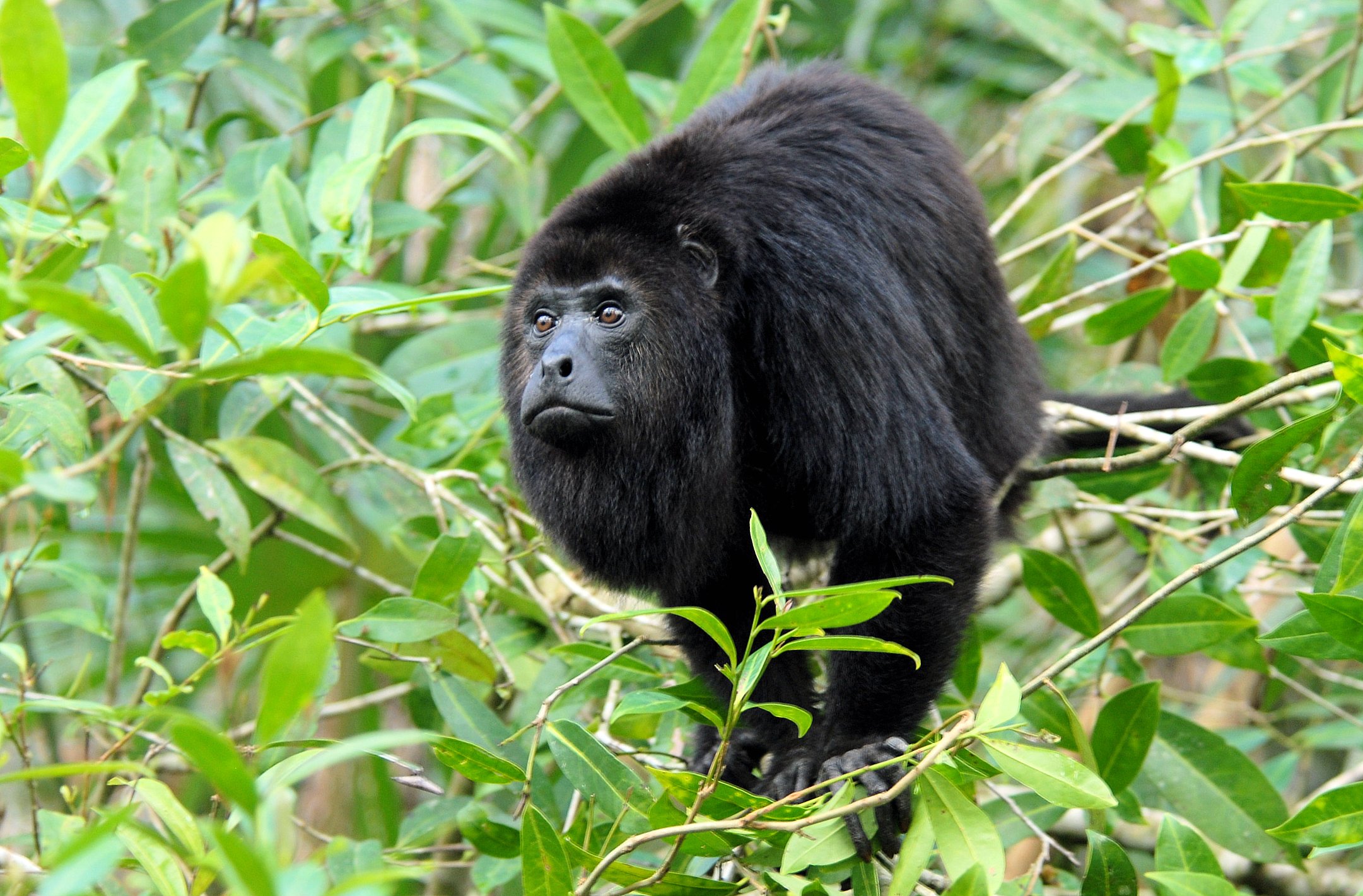|
Vulcanoa
''Vulcanoa'' is a monospecific genus of flowering plant in the dogbane family that contains only the species ''Vulcanoa steyermarkii''. It is a liana native to Guatemala and the Mexican state of Chiapas. Description ''Vulcanoa steyermarkii'' is a woody vine with trichomes that lack glands and face backwards. The leaves of the plant are placed opposite each other on the stems. The blades are a narrow oval shape which taper to a point, and are covered in rust-colored hairs. The flower clusters are cymes with few flowers, and the flowers have bell-shaped corollas and concave coronas that are covered in fine hairs. The fruits are spindle-shaped and shaggy with dense prickles. Taxonomy and etymology The genus ''Vulcanoa'' was first described by Venezuelan botanist Gilberto Morillo in 2015. The name derives from the Greek fire god Vulcan, in reference to the habitat of ''Vulcanoa steyermarkii'' on volcanic mountains. It was created by splitting a single species, ''Matelea st ... [...More Info...] [...Related Items...] OR: [Wikipedia] [Google] [Baidu] |
Gilberto Morillo
Gilberto N. Morillo (born 1944) is a Venezuelan scientist, author, and educator. He was known for botany. In 1995 he was chosen as an elected curator of Herbario Forestal (MER) of the University of the Andes in Mérida, Venezuela. Morillo had already been a curator of the Faculty of Pharmacy (MERF) from the same university and the National Herbarium of Venezuela in Caracas. He is a collector of Angiopspermaes, whose specimens are in the National Herbarium of Venezuela. He is currently a researcher with the highest number of scientific publications of the Faculty of Forestry and Environmental and global specialist in Asclepiadaceae and a consultant for prestigious journals in the field of botany. Species named after Morillo including '' Prestonia morilloi'' (Apocynaceae), '' Cynanchum morilloi'', '' Macroditassa morilloana'', '' Oxypetalum morilloanum'', '' Lessingianthus morilloi'', '' Acianthera morilloi'' and '' Piper morilloi''. As of October 2023 Morillo has published 514 nam ... [...More Info...] [...Related Items...] OR: [Wikipedia] [Google] [Baidu] |
Corolla (botany)
Petals are modified leaves that form an inner whorl surrounding the reproductive parts of flowers. They are often advertising coloration, brightly coloured or unusually shaped to attract pollinators. All of the petals of a flower are collectively known as the ''corolla''. Petals are usually surrounded by an outer whorl of modified leaves called sepals, that collectively form the ''calyx'' and lie just beneath the corolla. The calyx and the corolla together make up the perianth, the non-reproductive portion of a flower. When the petals and sepals of a flower are difficult to distinguish, they are collectively called tepals. Examples of plants in which the term ''tepal'' is appropriate include Genus, genera such as ''Aloe'' and ''Tulipa''. Conversely, genera such as ''Rose, Rosa'' and ''Phaseolus'' have well-distinguished sepals and petals. When the undifferentiated tepals resemble petals, they are referred to as "petaloid", as in petaloid monocots, orders of monocots with brightly ... [...More Info...] [...Related Items...] OR: [Wikipedia] [Google] [Baidu] |
Flora Of Guatemala
According to ParksWatch and the IUCN, Guatemala is considered the fifth biodiversity hotspot in the world. The country has 14 ecoregions ranging from mangrove forest (4 species), in both ocean littorals, dry forests and scrublands in the eastern highlands, subtropical and tropical rain forests, wetlands, cloud forests in the Verapaz region, mixed forests and pine trees, pine forests in the highlands. Over one third of Guatemala (36.3% or about 39,380 km2) is forested (2005). About half of the forests (49.7% or roughly 19,570 km2) is classified as primary forest which is considered the most biodiversity, biodiverse forest type. Tree species include 17 conifers (pines, Cupressaceae, cypress, including the Endemic (ecology), endemic ''Abies guatemalensis''), the most in any tropical region of the world. Although Guatemala is covered greatly by forests, they still have a deforestation rate of 1.7%, showing that these areas are under a big threat. There have been many conve ... [...More Info...] [...Related Items...] OR: [Wikipedia] [Google] [Baidu] |
Monotypic Apocynaceae Genera
In biology, a monotypic taxon is a taxonomic group (taxon) that contains only one immediately subordinate taxon. A monotypic species is one that does not include subspecies or smaller, infraspecific taxa. In the case of genera, the term "unispecific" or "monospecific" is sometimes preferred. In botanical nomenclature, a monotypic genus is a genus in the special case where a genus and a single species are simultaneously described. Theoretical implications Monotypic taxa present several important theoretical challenges in biological classification. One key issue is known as "Gregg's Paradox": if a single species is the only member of multiple hierarchical levels (for example, being the only species in its genus, which is the only genus in its family), then each level needs a distinct definition to maintain logical structure. Otherwise, the different taxonomic ranks become effectively identical, which creates problems for organizing biological diversity in a hierarchical system. ... [...More Info...] [...Related Items...] OR: [Wikipedia] [Google] [Baidu] |
Matelea
''Matelea'' is a genus of flowering plants in the family Apocynaceae. It contains about 200 species, which are commonly known as milkvines. Some people consider '' Chthamalia'' to be a synonym to or a subgenus of ''Matelea''. Species , Plants of the World Online accepted the following species: *'' Matelea abbreviata'' Standl. & L.O.Williams *'' Matelea acevedoi'' Morillo *'' Matelea acuminata'' (Griseb.) Woodson *'' Matelea adenocardia'' (Standl.) Woodson *'' Matelea alabamensis'' (Vail) Woodson *'' Matelea alainii'' Woodson *'' Matelea altamirana'' Morillo *'' Matelea ampiyacuensis'' Morillo *'' Matelea andina'' (Malme) Morillo *'' Matelea angustifolia'' (Griseb.) Greuter & Liede *'' Matelea angustiloba'' (B.L.Rob. & Greenm.) W.D.Stevens *'' Matelea annulata'' Alain *'' Matelea araneosa'' (Donn.Sm.) Woodson *'' Matelea asplundii'' (Malme) Morillo *'' Matelea atrocoronata'' (Brandegee) Woodson *'' Matelea atrolingua'' Morillo, I.L.Morais & Farinaccio *'' Matelea atrostellata'' Ri ... [...More Info...] [...Related Items...] OR: [Wikipedia] [Google] [Baidu] |
Vulcan (mythology)
Vulcan (, in archaically retained spelling also ''Volcanus'', both pronounced ) is the god of fire including the fire of volcanoes, deserts, metalworking and the forge in ancient Roman religion and Roman mythology, myth. He is often depicted with a blacksmith's hammer. The Vulcanalia was the annual Roman festival, festival held August 23 in his honor. His interpretatio graeca, Greek counterpart is Hephaestus, the god of fire and smithery. In Etruscan religion, he is identified with Sethlans (mythology), Sethlans. Vulcan belongs to the most ancient stage of Roman religion: Varro, the ancient Roman scholar and writer, citing the Annales Maximi, records that king Titus Tatius dedicated altars to a series of deities including Vulcan. Etymology The origin of the name is unclear. Roman tradition maintained that it was related to Latin words connected to lightning (), which in turn was thought of as related to flames. This interpretation is supported by Walter William Skeat in his et ... [...More Info...] [...Related Items...] OR: [Wikipedia] [Google] [Baidu] |
Fruit
In botany, a fruit is the seed-bearing structure in flowering plants (angiosperms) that is formed from the ovary after flowering. Fruits are the means by which angiosperms disseminate their seeds. Edible fruits in particular have long propagated using the movements of humans and other animals in a symbiotic relationship that is the means for seed dispersal for the one group and nutrition for the other; humans, and many other animals, have become dependent on fruits as a source of food. Consequently, fruits account for a substantial fraction of the world's agricultural output, and some (such as the apple and the pomegranate) have acquired extensive cultural and symbolic meanings. In common language and culinary usage, ''fruit'' normally means the seed-associated fleshy structures (or produce) of plants that typically are sweet (or sour) and edible in the raw state, such as apples, bananas, grapes, lemons, oranges, and strawberries. In botanical usage, the term ''fruit'' als ... [...More Info...] [...Related Items...] OR: [Wikipedia] [Google] [Baidu] |
ResearchGate
ResearchGate is a European commercial social networking site for scientists and researchers to share papers, ask and answer questions, and find collaborators. According to a 2014 study by ''Nature'' and a 2016 article in ''Times Higher Education'', it is the largest academic social network in terms of active users, although other services have more registered users, and a 2015–2016 survey suggests that almost as many academics have Google Scholar profiles. While reading articles does not require registration, people who wish to become site members need to have an email address at a recognized institution or to be manually confirmed as a published researcher in order to sign up for an account. Articles are free to read by visitors, however additional features (such as job postings or advertisements) are accessible only as a paid subscription. Members of the site each have a user profile and can upload research output including papers, data, chapters, negative results, patents, r ... [...More Info...] [...Related Items...] OR: [Wikipedia] [Google] [Baidu] |
Systematic Botany
''Systematic Botany'' is a peer-reviewed scientific journal covering the study of systematic botany. It is published quarterly by the American Society of Plant Taxonomists. According to the ''Journal Citation Reports'', the journal has a 2010 impact factor of 1.897. ''Systematic Botany'' was established in spring 1976 under founding editor-in-chief William Louis Culberson (Duke University). The current editor-in-chief is James F. Smith (Boise State University). The American Society of Plant Taxonomists also publishes the peer-reviewed taxonomic monograph series, ''Systematic Botany Monographs'' since 1980. Abstracting and indexing ''Systematic Botany'' is abstracted and indexed in Agricola, Agris, BioOne, PubMed, Scirus, and Science Citation Index Expanded The Science Citation Index Expanded (SCIE) is a citation index owned by Clarivate and previously by Thomson Reuters. It was created by the Eugene Garfield at the Institute for Scientific Information, launched in 196 ... [...More Info...] [...Related Items...] OR: [Wikipedia] [Google] [Baidu] |
Perianth
The perianth (perigonium, perigon or perigone in monocots) is the non-reproductive part of the flower. It is a structure that forms an envelope surrounding the sexual organs, consisting of the calyx (sepals) and the corolla (petals) or tepals when called a perigone. The term ''perianth'' is derived from Greek περί (, "around") and άνθος (, "flower"), while ''perigonium'' is derived from περί () and γόνος (, "seed, sex organs"). In the mosses and liverworts (Marchantiophyta), the perianth is the sterile (neither male nor female) tubelike tissue that surrounds the female reproductive structure or developing sporophyte. Flowering plants In flowering plants, the perianth may be described as being either dichlamydeous/heterochlamydeous in which the calyx and corolla are clearly separate, or homochlamydeous, in which they are indistinguishable (and the sepals and petals are collectively referred to as tepals). When the perianth is in two whorls, it is desc ... [...More Info...] [...Related Items...] OR: [Wikipedia] [Google] [Baidu] |
Cymes
In botany, an inflorescence is a group or cluster of flowers arranged on a plant's stem that is composed of a main branch or a system of branches. An inflorescence is categorized on the basis of the arrangement of flowers on a main axis ( peduncle) and by the timing of its flowering (determinate and indeterminate). Morphologically, an inflorescence is the modified part of the shoot of seed plants where flowers are formed on the axis of a plant. The modifications can involve the length and the nature of the internodes and the phyllotaxis, as well as variations in the proportions, compressions, swellings, adnations, connations and reduction of main and secondary axes. One can also define an inflorescence as the reproductive portion of a plant that bears a cluster of flowers in a specific pattern. General characteristics Inflorescences are described by many different characteristics including how the flowers are arranged on the peduncle, the blooming order of the flowers ... [...More Info...] [...Related Items...] OR: [Wikipedia] [Google] [Baidu] |



